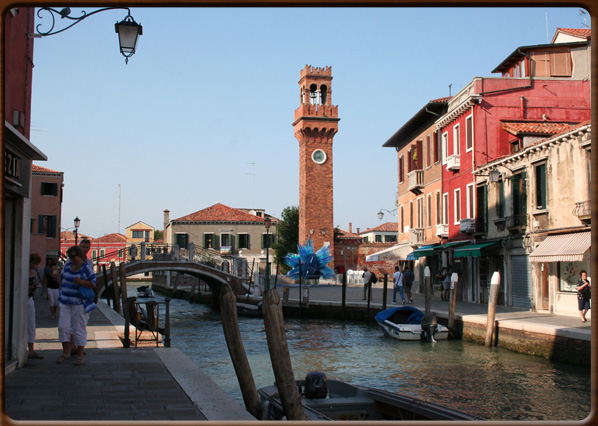
The island of Murano.

Antique tools for working glass and oven.

Museum of Glass. An exibition of glass art.



No video
The ancient Amurianum was home to mainland refugees in the 5th Century onwards. Later, when Venice became an important power, Murano was no longer an independent and autonomous island, although it retained certain privileges and political liberty.
Murano’s economy was based on one the most important sectors of Venetian industry: glass. The art of Murano glass was practised by the early settlers, but it was at the end of the 13th Century that the Venetian artisans moved their furnaces to the island, turning Murano into the capital of glass. Murano glass has been an important export commodity ever since.In addition to the splendid Basilica of Santi Maria e Donato on Murano, there is also the Church of "San Pietro Martire", which contains two important works by Giovanni Bellini: an Assumption of the Virgin Mary and Saints and The Doge Barbarigo presented to the Virgin Mary and Putto (1488).
400 - 1000 - ISOLE - rev. 0.1.7